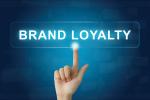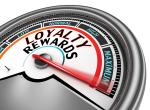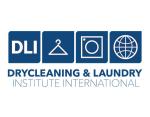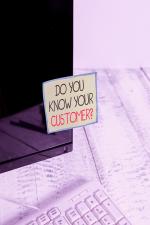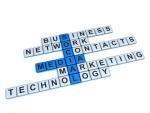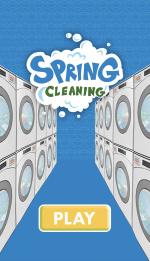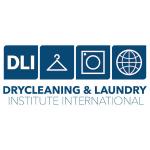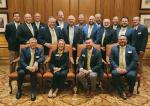CHICAGO — Most business owners didn’t get into their field to flex their marketing muscle, and dry cleaners are no exception. Successful marketing efforts can make the difference between success and simply getting by — or worse.
This critical facet of business was the focus of “Measure Your Marketing,” a webinar recently hosted by the Drycleaning & Laundry Institute (DLI) and let by David Coyle, industry marketing coach of Maverick Drycleaners and owner of In The Bag Cleaners in Wichita, Kansas. In Part 1 of this series, we examined some of the questions dry cleaners should ask themselves when it comes to their marketing, and today, we’ll dive into the pieces and mindset that drive successful marketing efforts.
Direct Response Marketing
Coyle says there are different marketing approaches that smaller companies such as drycleaning businesses should take. While branding can feed the ego, it’s difficult to track and can be expensive.
“Big companies like Pepsi or Anheuser Busch can do branding, image-based marketing because they have enormous marketing budgets that allow them to sway public opinion and generate demand,” he says.
“One of the best strategies for dry cleaners is to see what the customers already demand. Ask them what they’re looking for — what alleviates pain and what helps them attract pleasure in their lives.” This strategy, Coyle says, is called direct response marketing.
“I was introduced to this about 10 years ago, and it changed my world, it changed everything about what I was doing in our business,” he says. “It allowed me to truly, from an empathetic perspective, think of what the client wants and deliver it to them — and not talk in these vague generalizations that ‘We do an awesome job.’”
The Building Blocks of Effective Marketing
While marketing can be a creative effort, high-performing ads have a lot in common, Coyle believes.
Ads Must Have an Offer — “An offer is, basically, what does the client get if they do what you tell them to do?” Coyle says. “Every communication must ask for the recipient to take some sort of action, and for new clients, that offer should be irresistible. So, while we do comforter cleanings for 19 bucks, and we give someone a quarterly reminder to do that, I'm not so sure that it's absolutely irresistible. In some markets it is, and it's pretty irresistible in our market. But we found that $15 comforters are absolutely irresistible. And it turns out is one of the best ways to attract our target right-fit client.”
Ads Need to Grab Attention — Coyle believes that one of the worst sins in marketing is to be boring.
“People, generally speaking, live routine and boring lives. Part of your job in marketing is not to offend, but to actually wake people up a little bit and let them realize that if they make some adjustments to their routine, then they could actually be a lot happier.”
To illustrate this, Coyle uses wash-dry-fold as an example: “For someone who doesn’t use this service, we want to wake them up and ask them, ‘Could you imagine your life if you never did laundry again?’ or ‘Do you value your time at greater than $7 an hour?’ We want to wake someone up and make them realize that a change to their routine could make them happier. We can’t do that if we don’t grab their attention.”
Ads Should Address Pain and Provide Solutions — Effective marketing not only makes the audience realize how their lives could be better, but how your company can make that change a reality.
“For a lot of us, that pain point is time,” Coyle says. “If you’ve got four teenagers, for instance, the amount of laundry that's generated by that household is crazy. So, we want to address a specific single pain that the recipient has now, and then we also want to present a solution that will resolve the recipient's pain.”
Coyle cautions that the ads shouldn’t paint pictures that will ultimately disappoint.
“It's important that this marketing does not over-promise and under-deliver,” he says. “It needs to be understandable and believable. We don’t want to say, ‘Become a millionaire by never doing laundry again.’ But could someone use those 10 to 12 hours doing laundry and ironing to do things in their lives that are more motivating and meaningful? Absolutely.”
Ads Need to Have a Deadline — Marketing should provide a sense of urgency, Coyle believes, or risk being swept aside by the other demands of the day.
“If there's no reason to act now, people won't act now,” he says. “So, it's extremely important to create some scarcity by saying this offer is available in a certain timeframe. That timeframe depends on the offer a little bit. But in my experience, you know, that should be anywhere from two to four weeks to let them claim the offer.”
While the ad should give enough time for customers to respond to the ad, the danger lies in providing too much time.
“If you do something that expires four months from now, there's no urgency. They’ll think, ‘Let me put it in this pile, and I'll get to it later. So, the more urgent, the better.”
Ads Should Clearly Give Instructions — Unclear ads are no one’s friends, Coyle says: “Your marketing should make it very clear what to do next, to either claim that offer you’re presenting or to take the next step.”
Thinking about marketing from different perspectives can help in finding success with this step.
“A 12- or 13-year-old should have no question after reading your ad, your text, your email, your handwritten note, your Facebook or Google ad, or whatever they are looking at,” Coyle says.
Keeping in mind that your marketing message isn’t the only one they’re going to see that day, or even that minute, is crucial.
“People get confused,” he says, “especially with information overload. You need to tell them what to do next. This is the beginning of you setting the stage of being that trusted adviser and expert. Tell them what to do next, and most people will follow the direction that you give them if they're interested in that pain point being solved.”
Ad Success Must be Trackable — Knowing what is working and what isn’t allows cleaners to use their marketing budget to its fullest, Coyle says.
“There must be a mechanism, like a redemption code, that allows for tracking and measurement,” he says.
So, how should cleaners use a redemption code? “There are many kinds of ways,” Coyle says, “and as the point-of-sale systems become more focused on this, there are going to be additional ones.”
Identifying which piece of marketing brought someone into your store is key.
“Some people put a coupon code — it might be a number, or it might be some letters and numbers combined together. It might be a barcode,” Coyle says. “There are a lot of services where your point of sale can provide a barcode that, when it's scanned, can automatically be applied to their account so they don't even need to present the coupon when they come in. It can happen that easily.
“But there has to be something that basically clicks and says, ‘We applied this coupon, they took this offer, and we can connect it to this order.’ Otherwise, you will not be able to measure it.”
Come back Thursday for Part 3 of this series, where we’ll examine the traffic sources successful dry cleaners use to build their marketing strategies. For Part 1, click HERE.
Have a question or comment? E-mail our editor Dave Davis at [email protected].


















